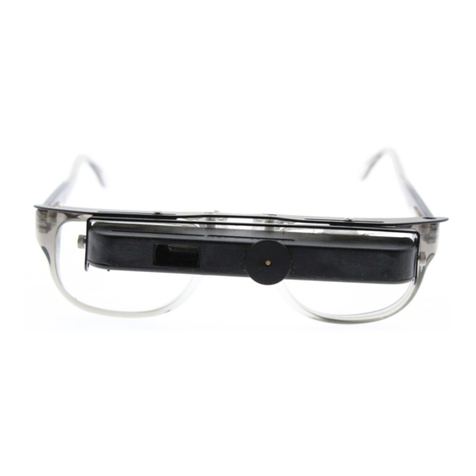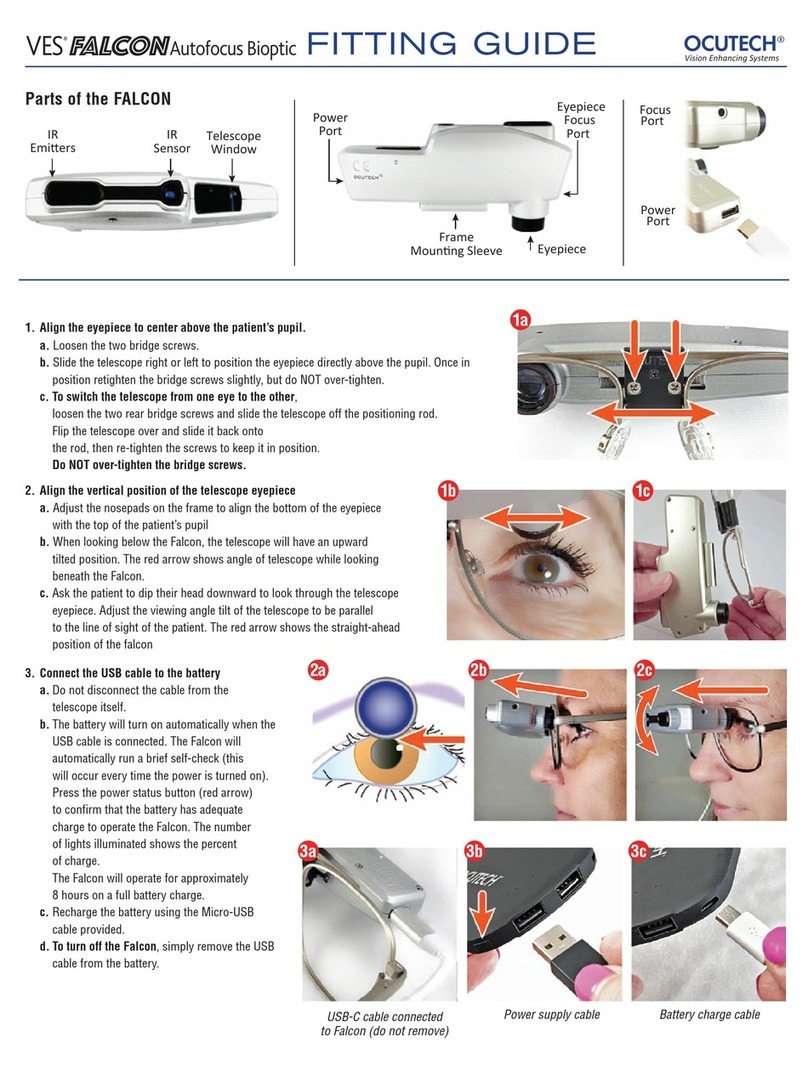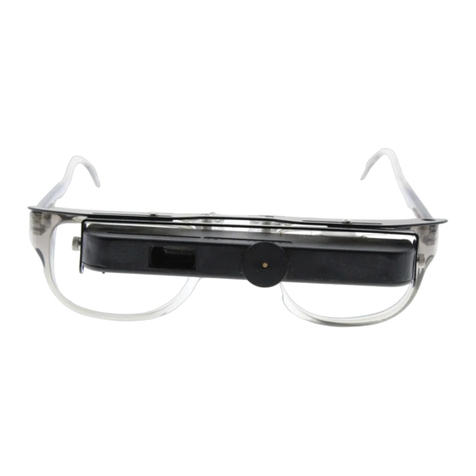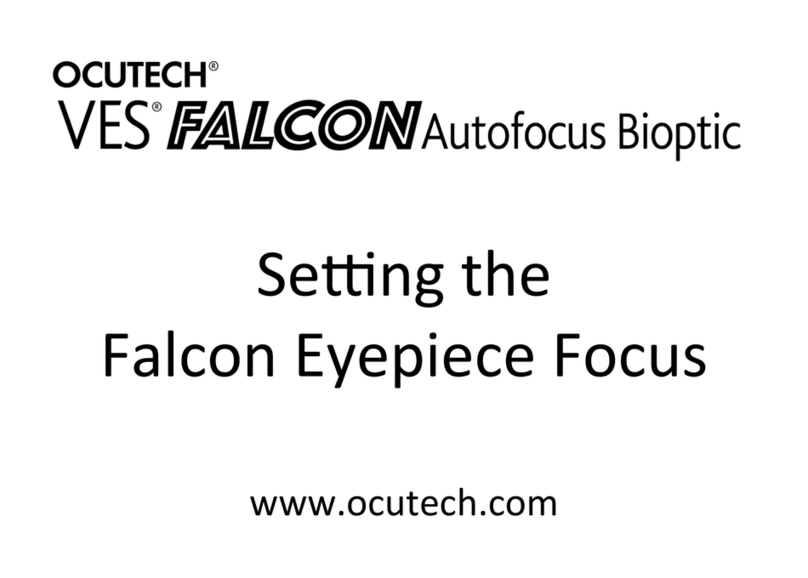
Ocutech VES
®
Mini
Fitting Guide
3. Prescribing and ordering the patient’s system:
The VES®Mini can be prescribed monocularly, binocularly and for distance or near.
You must determine the proper eye (if a monocular order) to use the device, the proper
size frame and temples (we suggest sturdy metal frames with adjustable nosepads and
slightly longer temples for more holding power), and the appropriate carrier lens
prescription for the eyeglasses (which can be either single vision or bifocal – we do not
recommend trifocals or progressive lenses for use with this device). In high
prescriptions, remember to use the smallest frame possible. The VES®Mini can
accommodate correction of refractive errors between +12 and -12 diopters by simply
focusing the telescope. Eyepiece corrections for higher refractive errors and for astigmatism are available by a special-order
cap that fits over the back of the telescope eyepiece. Accessories include lens caps for the front of the telescope that can
hold either filters or reading cap powers and slip-behind sunfilters in several colors. Reading caps should be considered if
closer working distances are required than that provided solely by focusing the telescope itself.
4. Determining the proper positioning of the VES
®
Mini:
The bottom of the eyepiece should be positioned to line up at the top of the pupil
or the bottom of the upper lid, whichever is lower.
The telescope should be angled upward, so that when the patient dips their head
down to sight through the telescope their line of sight is parallel to and directly
through the telescope. The higher the telescope sits on the head, the greater the
downward tilt of the head will be required to sight through the telescope, and the
greater the upward angle of the telescope must be. Try to fit the telescope as low
as possible to minimize the angle.
For distance use, the telescope is positioned at the user’s monocular pupillary
distance (PD) and usually inclined upward 10 degrees. The centers of the tele-
scope eyepiece(s) are usually positioned 10mm below the top of the eyeglass lens.
For near, the telescopes are positioned at the monocular near PD for binocular
systems. Several methods are available to determine an accurate near PD
measurement. For binocular systems, a near working distance must be provided so
that the convergence of the two telescopes can be preset. If a monocular near
device is prescribed, no convergence is required. Near telescopes are usually
inclined downward 18 degrees. The centers of near telescopes are usually
positioned 15 mm above the bottom of the eyeglass lens.
To confirm proper positioning and to specify positioning other than the standards described above, we recommend
that you mark the location of the pupil on each carrier lens.
Use the step-by-step ordering form to insure that you have answered all questions, and feel free to call Ocutech consultations for support.
The bottom of the eyepiece should
be positioned at the top of the pupil
The telescope is positioned at an
upward angle so the user can
view normally beneath it
Simply drop the head and look into
the eyepiece to sight through
the telescope
109 Conner Drive, Suite 2105, Chapel Hill, NC 27514 USA
+1 (800) 326-6460 • +1 (919) 967-6460 • Fax: +1 (919) 967-8146
®
Effective August 2010
© OCUTECH
© OCUTECH
© OCUTECH
























